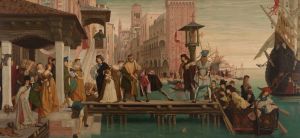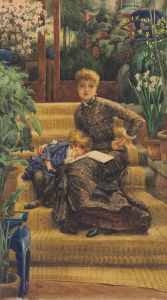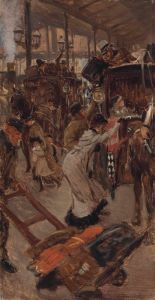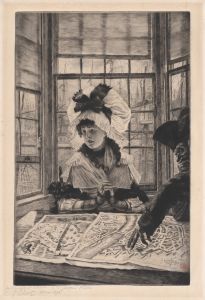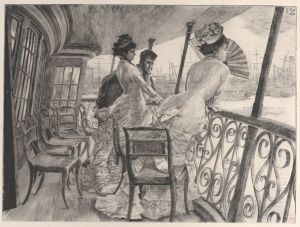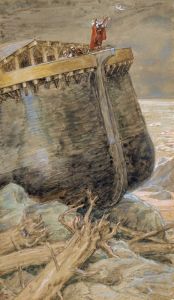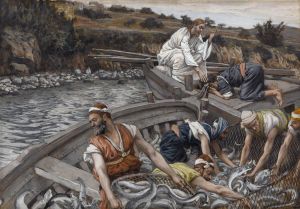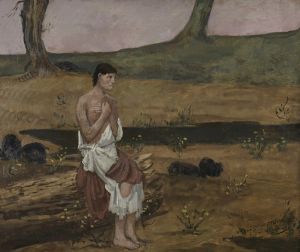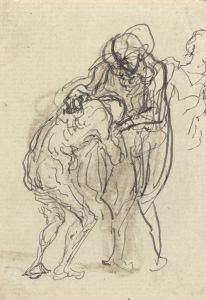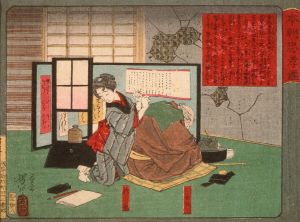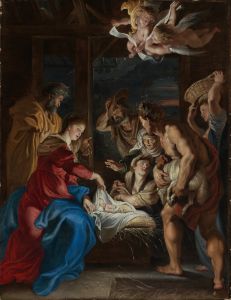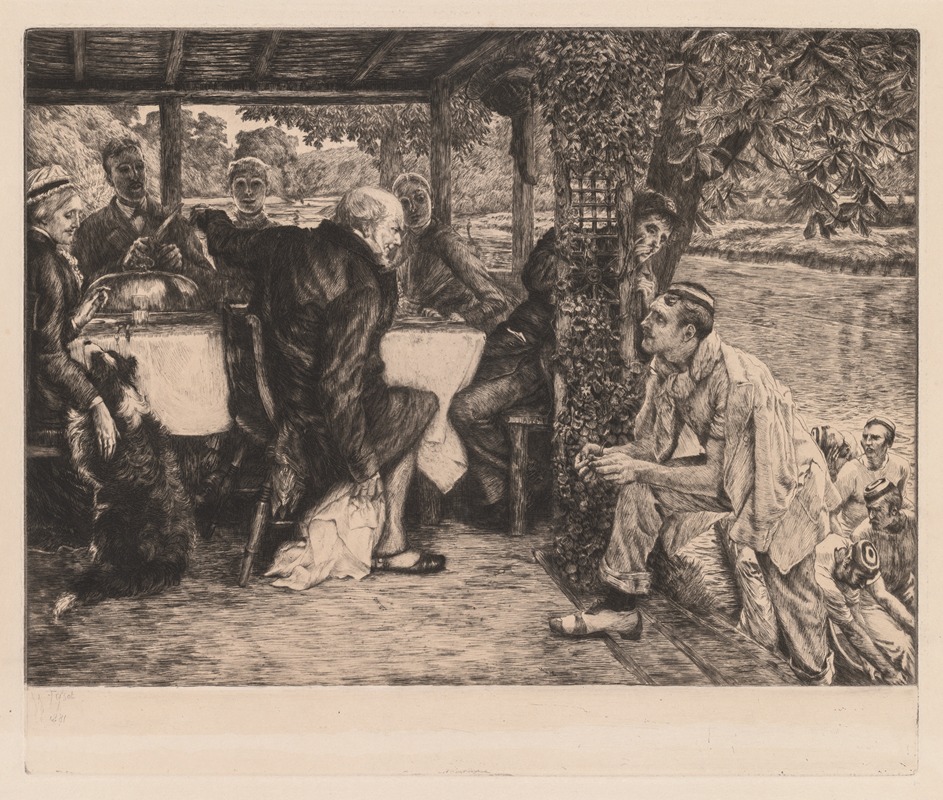
The Prodigal Son; The Fatted Calf
A hand-painted replica of James Tissot’s masterpiece The Prodigal Son; The Fatted Calf, meticulously crafted by professional artists to capture the true essence of the original. Each piece is created with museum-quality canvas and rare mineral pigments, carefully painted by experienced artists with delicate brushstrokes and rich, layered colors to perfectly recreate the texture of the original artwork. Unlike machine-printed reproductions, this hand-painted version brings the painting to life, infused with the artist’s emotions and skill in every stroke. Whether for personal collection or home decoration, it instantly elevates the artistic atmosphere of any space.
James Tissot, a French painter and illustrator, created "The Prodigal Son; The Fatted Calf" as part of a series of works illustrating the biblical parable of the Prodigal Son. Tissot was known for his detailed and narrative-driven style, often depicting scenes with a high level of realism and emotional depth. This particular painting is part of a series that captures various moments from the parable found in the Gospel of Luke in the New Testament.
The parable of the Prodigal Son tells the story of a younger son who asks his father for his share of the inheritance, leaves home, and squanders his wealth in a distant country. After falling into poverty, he returns home, repentant, and is warmly welcomed by his father, who orders a feast to celebrate his return. The fatted calf is a significant symbol in the story, representing the father's joy and forgiveness.
Tissot's interpretation of "The Prodigal Son; The Fatted Calf" focuses on the moment of celebration and reconciliation. The painting likely depicts the scene where the father orders the fatted calf to be killed for the feast, symbolizing the joy of the son's return. Tissot's attention to detail and ability to convey emotion through his characters' expressions and body language are evident in this work. The painting captures the essence of forgiveness and redemption, central themes of the parable.
James Tissot was born in 1836 in Nantes, France, and gained recognition for his genre paintings and portraits. He moved to England during the Franco-Prussian War and became a successful artist in London, known for his depictions of contemporary life and society. Later in his career, Tissot experienced a religious awakening, which led him to focus on biblical subjects. This shift in his artistic focus resulted in a series of works illustrating scenes from the Bible, including the Prodigal Son series.
Tissot's biblical paintings are characterized by their meticulous attention to historical and cultural details, as he sought to create accurate representations of the biblical narratives. He traveled to the Middle East to study the landscapes, architecture, and clothing of the region, which informed his depictions of biblical scenes. This dedication to authenticity is evident in "The Prodigal Son; The Fatted Calf," where Tissot's careful rendering of the setting and characters adds depth and realism to the narrative.
"The Prodigal Son; The Fatted Calf" is part of Tissot's larger body of work that explores themes of faith, redemption, and human emotion. His ability to convey complex narratives through his art has made his biblical series a significant contribution to religious art. Tissot's works continue to be studied and appreciated for their artistic merit and their insightful interpretation of biblical stories.





